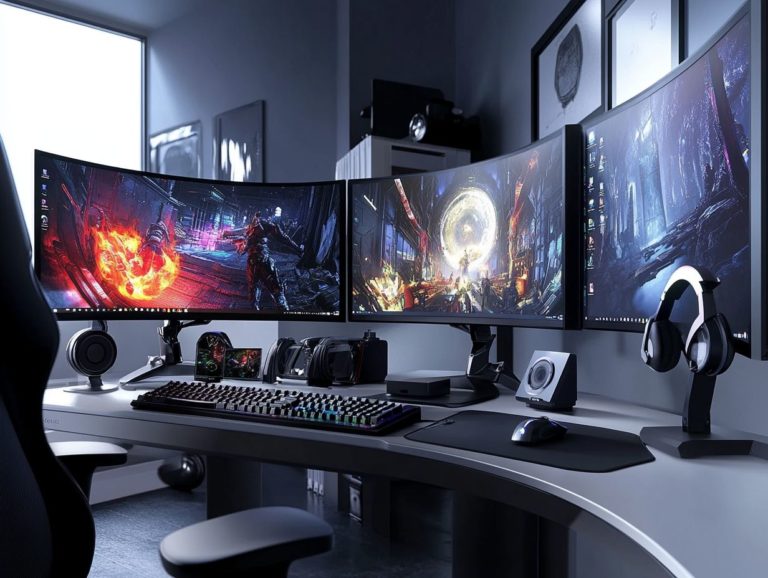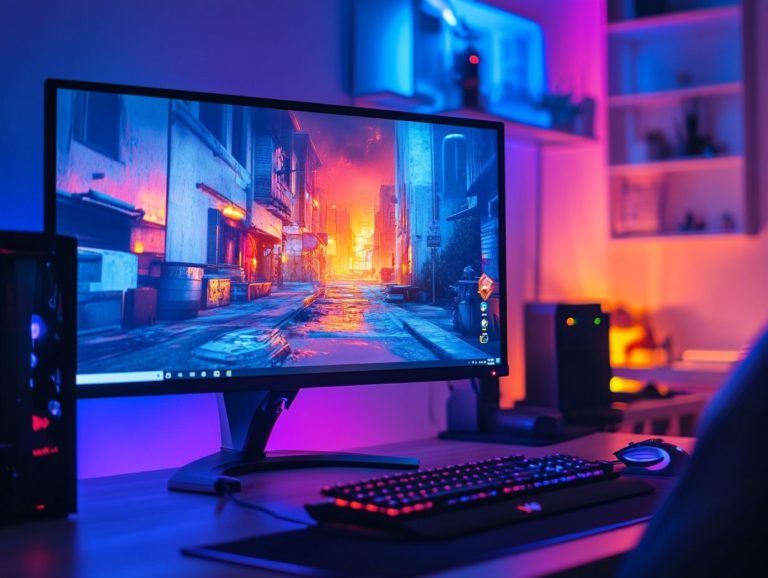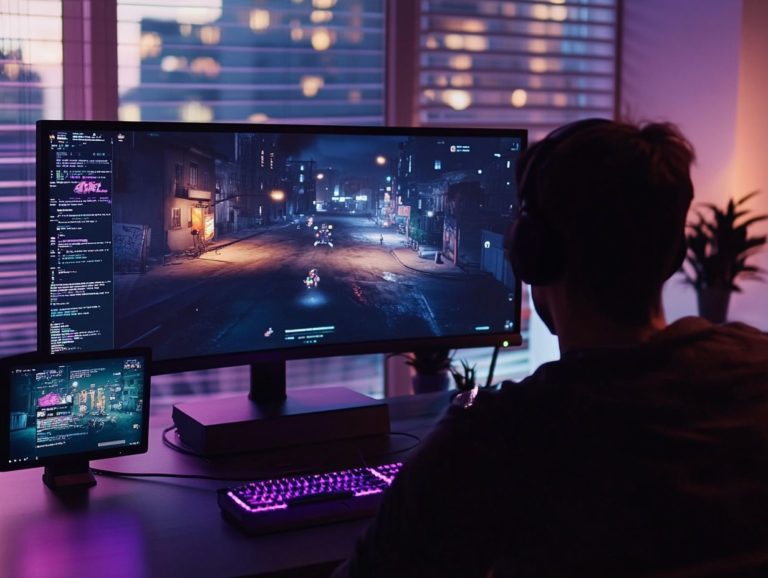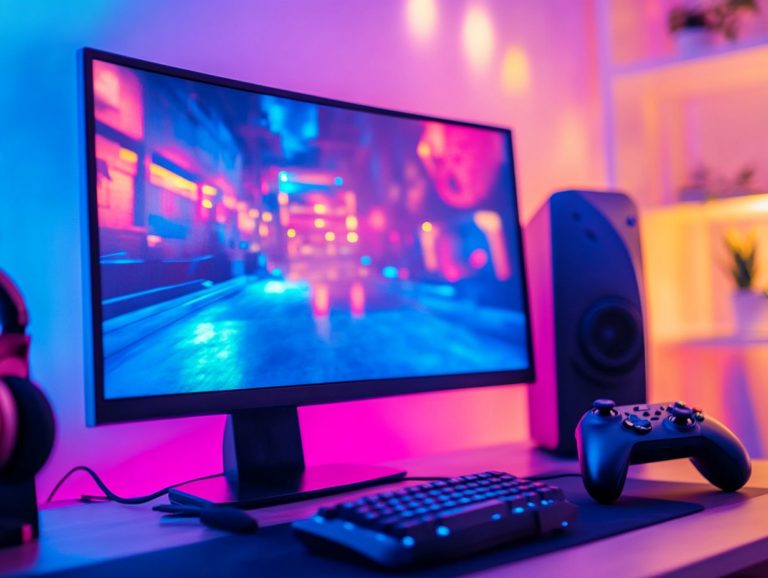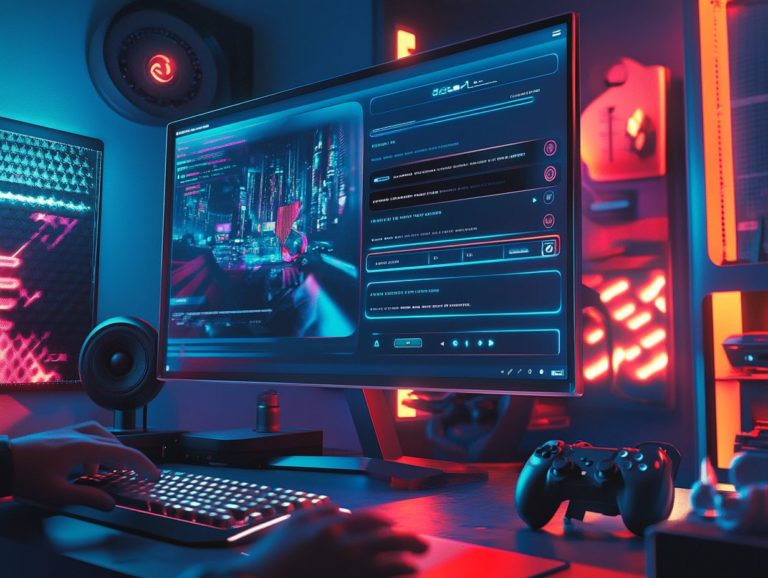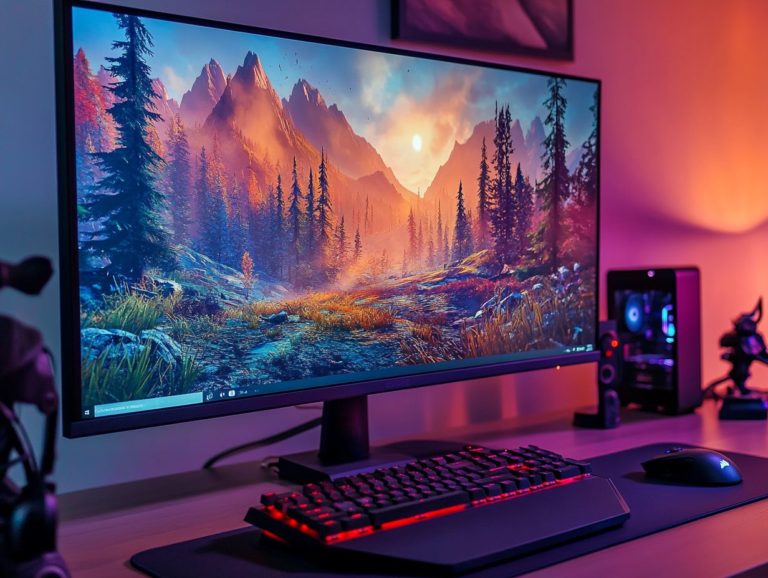how to adjust brightness for gaming comfort
Gaming offers an immersive experience, yet it often comes with a hidden cost eye strain. One crucial element in ensuring a comfortable gaming session is the brightness of your screen.
This guide explores how brightness impacts eye comfort and presents actionable steps to help you discover the ideal settings for your gaming environment.
Key considerations include:
- The lighting in your room
- Your personal preferences
- Additional tips to keep your eyes feeling rejuvenated
Make the right adjustments. You can elevate your gaming comfort and protect your vision!
Contents
- Key Takeaways:
- Adjusting Brightness for Better Comfort
- How to Adjust Brightness for Optimal Gaming Comfort
- Factors to Consider When Adjusting Brightness
- Additional Tips for Reducing Eye Strain During Gaming
- Frequently Asked Questions
- What is the recommended brightness level for gaming comfort?
- How do I adjust the brightness level on my monitor?
- Is it better to have a higher or lower brightness level for gaming comfort?
- What is the ideal brightness level for gaming in a dark room?
- Can I use a brightness level of 98 cd/m for gaming comfort?
- How often should I adjust the brightness level for gaming comfort?
Key Takeaways:
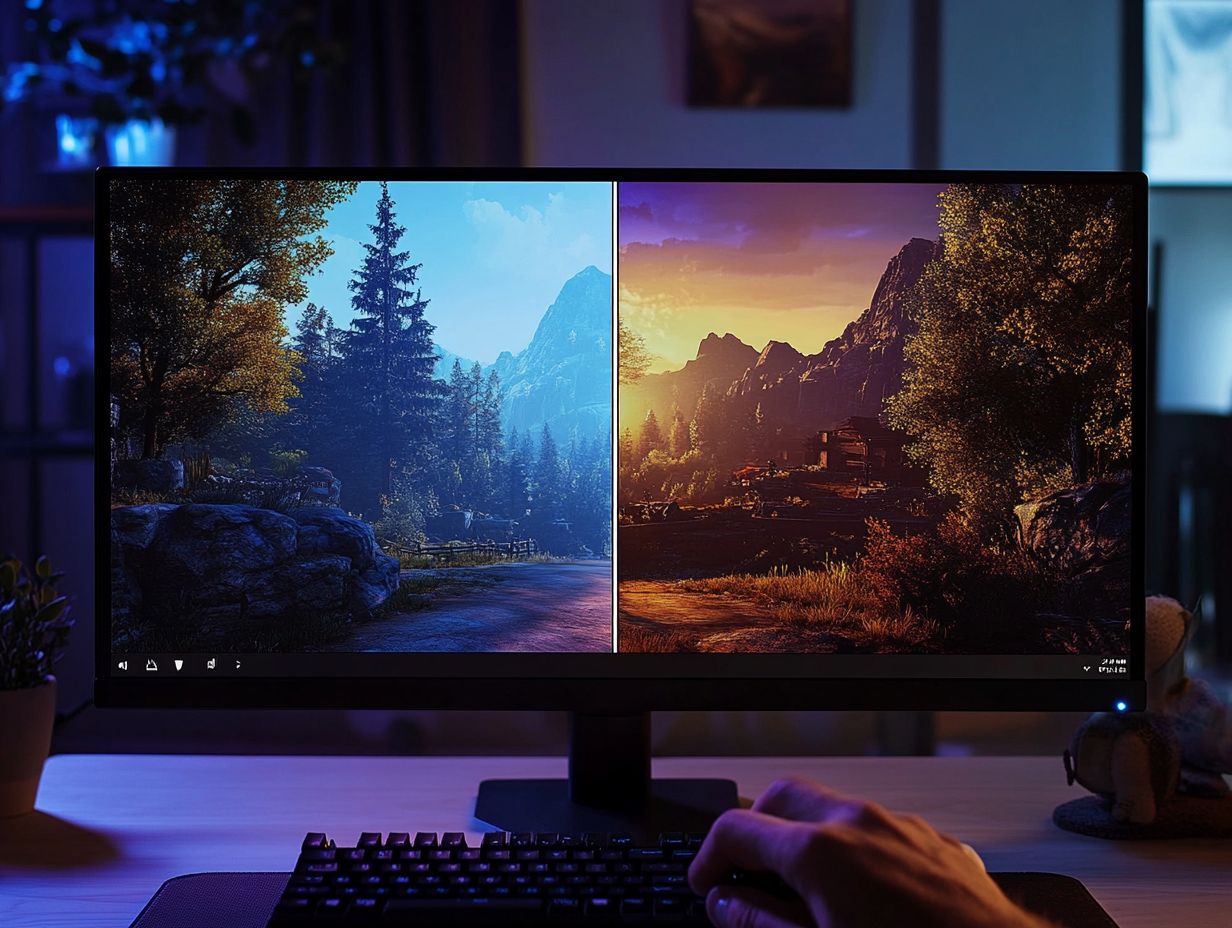
Adjusting brightness is key for comfortable gaming. Follow our guide to find the settings that work for you!
Adjusting Brightness for Better Comfort
Adjusting the brightness settings on your gaming monitor is essential for enhancing eye comfort and minimizing strain during marathon gaming sessions. Finding optimal brightness levels elevates image quality and adapts to changing lighting conditions, making your gaming experience visually enjoyable and less tiring.
By fine-tuning your monitor settings, you can significantly boost your overall performance, especially in immersive titles like RDR2 or The Witcher 3. Utilizing tools like a color accuracy measuring tool and professional calibration will help you achieve the perfect brightness contrast tailored specifically to your setup.
How Brightness Affects Eye Strain
The brightness settings on your monitor can significantly impact eye strain during marathon gaming sessions where ambient lighting fluctuates.
When your screen brightness is misaligned either too high or too low relative to the surrounding light it can lead to discomfort. For instance, if your monitor is overly bright in a dimly lit room, you might experience glare that forces your eyes to work harder to focus. Conversely, a monitor that s too dim in a bright environment can have you squinting to see details.
Ensuring your brightness levels are in harmony with ambient lighting enhances visual comfort, preventing fatigue and elevating your overall experience. This adjustment can transform your gaming sessions, allowing you to dive into virtual worlds without putting unnecessary strain on your eyes.
How to Adjust Brightness for Optimal Gaming Comfort
Adjusting the brightness of your gaming monitor is crucial for achieving optimal comfort and performance, particularly when diving into visually intense games.
Test different brightness levels under various lighting conditions to discover what works best for your environment. Utilizing features like auto brightness can enhance your experience, allowing for a consistent visual display as surrounding light shifts.
Consider manual calibration to tailor the settings to your unique preferences, ensuring your gaming setup provides ultimate comfort and immersion.
Step-by-Step Guide for Adjusting Brightness
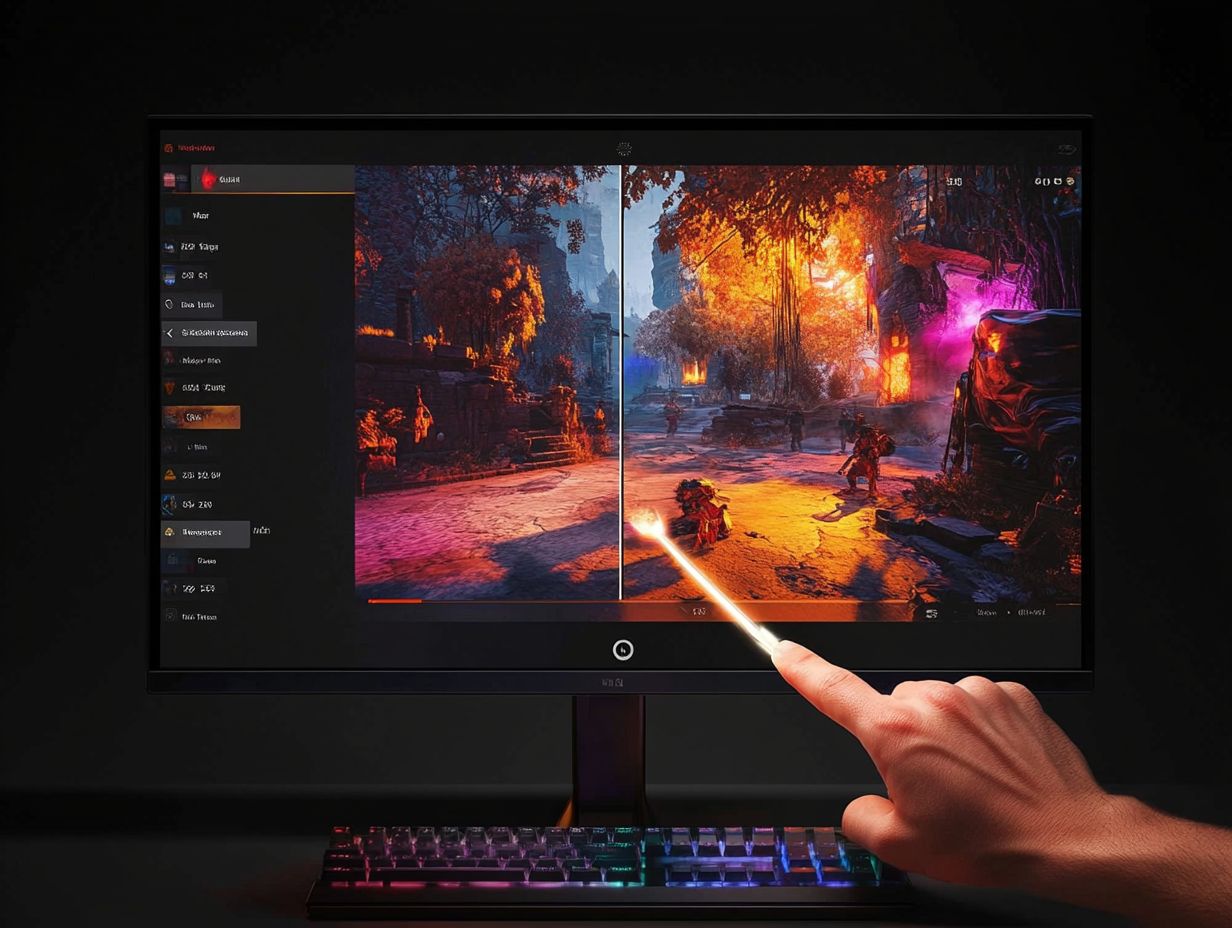
To effectively adjust the brightness on your gaming monitor, follow these straightforward steps to achieve ideal visual settings tailored to your preferences:
- Access the monitor’s control settings, typically found directly on the device or through its on-screen menu.
- Locate the brightness and contrast options, which you can fine-tune to suit your taste.
- Don’t overlook the importance of color temperature; a simple adjustment can dramatically enhance your visual experience, making colors pop or appear warmer.
- Activating a setting that helps reduce blurring during fast action can also ensure seamless visuals during intense gaming sessions.
- If you’re keen to elevate your setup further, consider using software tools like DisplayCAL. These can provide comprehensive calibration, ensuring your monitor performs optimally and aligns perfectly with your gaming style.
Take control of your gaming experience today by adjusting your brightness settings!
Factors to Consider When Adjusting Brightness
When adjusting brightness, consider key factors to optimize your gaming experience. One significant element is the room’s lighting conditions, which profoundly influence how brightness is perceived on your gaming monitor.
Your personal preferences also affect which brightness level feels comfortable and visually appealing. The type of games you enjoy also impacts your brightness needs, as different genres benefit from varying brightness levels to enhance your overall experience.
By understanding these considerations, you can effectively tailor your display settings for maximum enjoyment.
Room Lighting and Monitor Settings
The relationship between room lighting and monitor settings is vital for an optimal gaming experience. Ambient light directly affects how you see brightness on your screen.
Both natural and artificial light sources influence color accuracy and vibrancy. For example, bright sunlight streaming through your windows can create glare, diminishing clarity and making it harder to discern details in your game.
On the other hand, dim ambient light may require adjustments to avoid straining your eyes. Using a calibration tool a device or software that helps you adjust screen settings for better quality can help you modify brightness and contrast based on your specific lighting conditions.
Choosing a warmer color temperature in low-light scenarios enhances comfort and elevates your gameplay, creating a balanced visual experience that keeps you engaged.
Personal Preference and Game Genre
Your individual preferences greatly influence your brightness settings, especially since different game genres demand varying degrees of visual comfort.
Take first-person shooters (FPS), for instance. They thrive on heightened brightness, allowing you to see into shadowy corners and maintain a competitive edge.
If you re diving into a role-playing game (RPG), softer lighting can be essential. It creates an immersive atmosphere that pulls you into the rich narrative.
If action-packed FPS games are your jam, a higher brightness setting becomes your best friend, making it easier to spot lurking enemies. For those who revel in the depth of RPGs, you ll love a dimmer setting that highlights artistic visuals and enhances your storytelling experience.
Ultimately, tweaking your brightness levels to fit the game you re playing can significantly boost both your performance and enjoyment.
Additional Tips for Reducing Eye Strain During Gaming
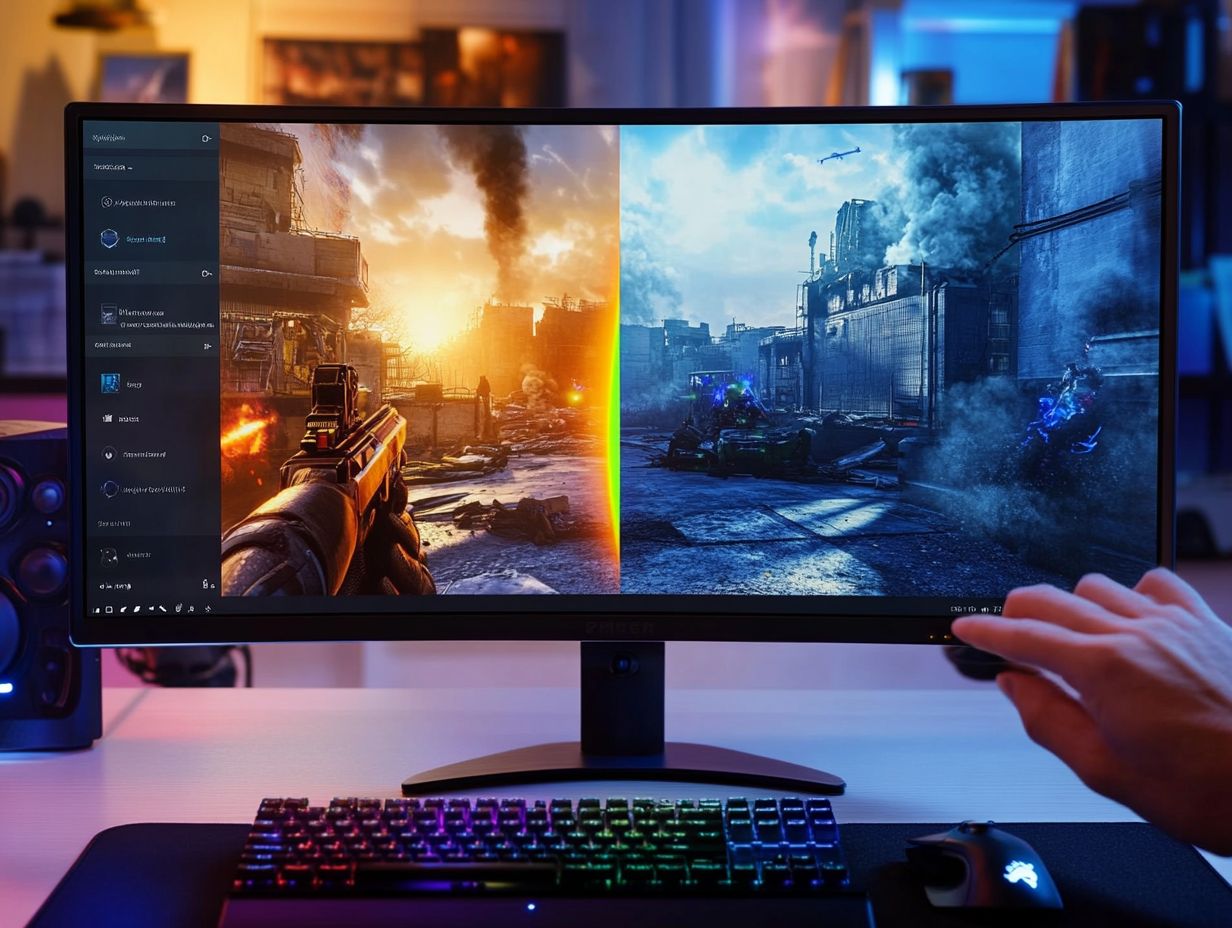
In addition to fine-tuning your brightness settings, several effective strategies can minimize eye strain during gaming sessions, significantly enhancing your visual comfort.
Proper Screen Distance and Breaks
Maintaining an appropriate screen distance is essential for preventing eye strain. Taking regular breaks can greatly enhance your visual comfort during extended gaming sessions.
The ideal screen distance varies depending on the size and resolution of your monitor. Larger or higher-resolution screens usually require you to sit farther away for optimal clarity. Research suggests a distance of about one to two feet is suitable for standard screens, though this can vary based on your eyesight and the specific characteristics of your monitor.
To minimize fatigue, pause every 20 to 30 minutes. Engage in activities like stretching, taking a brief walk, or simply focusing on a distant object for 20 seconds.
By incorporating these short breaks into your gaming routine, you reduce strain and refresh your mind, ultimately enhancing your performance.
Using Blue Light Filters
Blue light filters are effective at reducing eye strain. They also enhance your visual comfort during long hours in front of screens.
Blue light from screens can disrupt your sleep and cause digital eye strain. It’s crucial to find solutions to counteract these effects.
You can implement blue light filtering on your monitors in several ways. One option is to adjust the color settings on your devices.
Software like f.lux or Night Shift changes your screen’s hues to warmer tones. This effectively reduces blue light exposure in the evening hours.
Frequently Asked Questions
What is the recommended brightness level for gaming comfort?
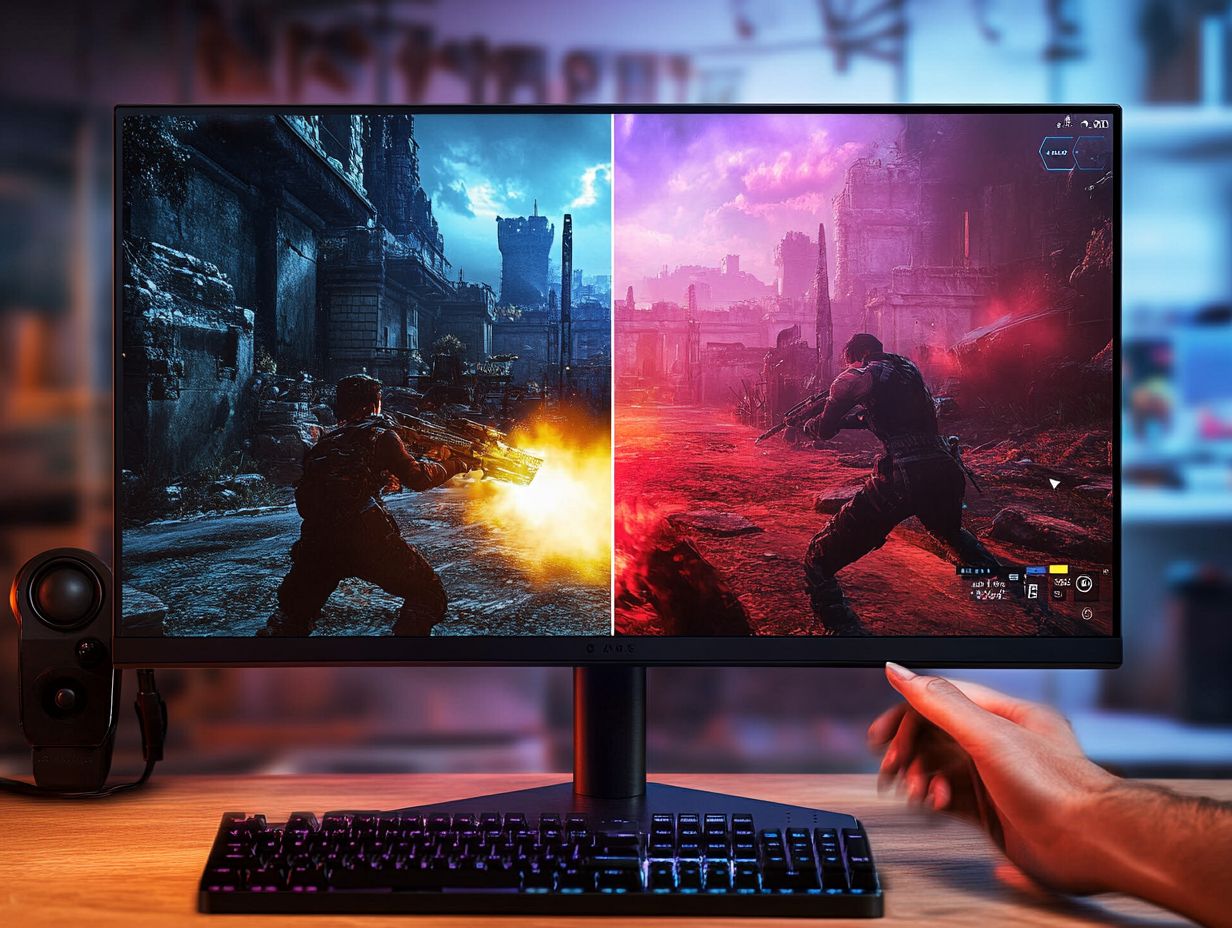
The recommended brightness level is typically between 80-120 cd/m (which measures light intensity) for gaming comfort.
How do I adjust the brightness level on my monitor?
To adjust the brightness, go to your monitor’s settings. Look for the brightness option or use shortcut keys ‘Fn’ + ‘9’ or ‘Fn’ + ‘8’ on your keyboard.
Is it better to have a higher or lower brightness level for gaming comfort?
Lower brightness levels are usually the way to go for gaming comfort. They really help reduce eye strain and keep you focused!
What is the ideal brightness level for gaming in a dark room?
The ideal brightness level in a dark room is typically between 1-20 cd/m . This helps reduce eye strain and enhances your gaming experience.
Can I use a brightness level of 98 cd/m for gaming comfort?
Yes, a brightness level of 98 cd/m is within the recommended range. It strikes a good balance between brightness and comfort.
How often should I adjust the brightness level for gaming comfort?
It’s a good idea to adjust the brightness every time you start a gaming session. Lighting conditions can change and affect your comfort and gaming experience.
Try adjusting your settings today for a more comfortable gaming experience!

